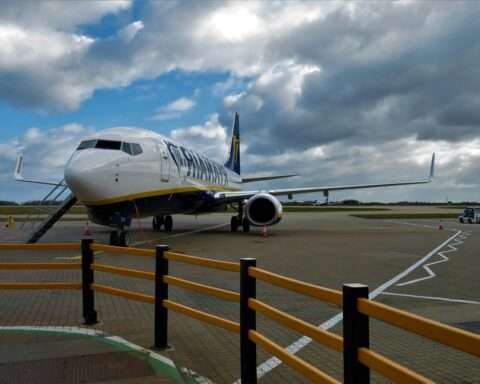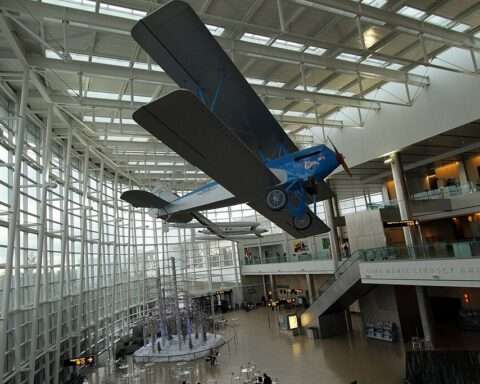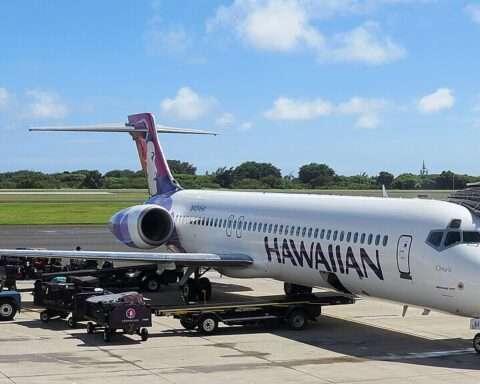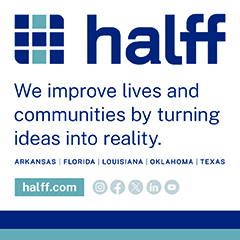Las Cruces International Airport is considering a new master plan for capital projects and funding priorities for the future.
In an update provided to the City Council last month, airport officials presented an update on the new plan, titled Wingspan 2040 – A Vision for the Future. Designed to guide the airport’s infrastructure investments, the new plan envisions the airport as a thriving gateway for aviation and commercial aerospace industries in New Mexico.
The City Council will review the airport’s new master plan, in addition to the city’s capital improvement plan and future funding strategies, before voting on the plan’s adoption.
As the city considers the future vision for the international facility, the proposed master plan will allow the airport to set concrete short-, medium- and long-term goals and future capital projects. The plan seeks to address the needs of commercial and general airlines while maintaining a safe, efficient and welcoming environment for the airport’s visitors.
The master plan includes several key projects to improve the airport’s infrastructure and driving further investment into the transportation hub. The upgrades are designed to accommodate larger aircraft, increase passenger service and make the airport more competitive. Some of these projects include:
- Runway expansions – The master plan recommends expanding and/or relocating several runways at the airport that are not adequate for either critical design aircraft or Federal Aviation Administration regulations. The recommended improvements are featured on Runway 12-30 and Runway 8-26.
- Taxiway Design – The plan proposes the redesign of taxiways alpha, bravo and charlie. Taxiway alpha would be relocated to an abandoned runway, while bravo and charlie would be combined to provide access to Runway 12’s end approach.
- Airport Pavement Maintenance Plan – The master plan included the development of a pavement condition assessment. This assessment indicated many of the airport’s areas need maintenance and rehabilitation, including a recommended timeline for projects.
- Passenger Terminals – The plan recommends the pursuit of a terminal building that can accommodate future passenger projections. The plan urges the airport to complete the design, permitting and construction of a transitional terminal and vehicle parking.
- General Aviation – Addressing the future needs of investors, the plan proposes the construction of new hangars at the airport. The plan also recommends expanding the current General Aviation Apron and constructing additional aprons.
For the commercial aviation industry and consumers, the Las Cruces International Airport offers a unique opportunity for commercial aerospace companies.
As the airport is located within approximately 60 miles of White Sands Missile Range, NASA, Holloman Air Force Base and Fort Bliss, the master plan indicates an emphasis in aerospace development to increase the airport’s attractiveness to developers and operators. This effort will also examine what measures might be taken to enable these additional aerospace investments.
According to the plan’s executive summary, the airport also anticipates expanding several existing services, such as the Dallas International Airport service, to daily and introducing new connections to Dallas-Fort Worth and Phoenix by 2027.
Notably, the master plan highlights partnerships with nearby higher education institutions and the Las Cruces Innovation and Industrial Park, which is located near the airport. The over 1,800-acre, city-owned lot is designed to serve as the future hub for the city’s aviation, aerospace and defense industries.
The airport’s partnership with New Mexico State University (NMSU) will offer “significant potential for economic development,” according to the master plan. NMSU would provide the airport with access and research from the university’s Physical Science Lab for predictive decision-making, specialized intelligence community support, advanced space exploration and more.
The master plan was informed by a public engagement phase to ensure the communities’ views are addressed.
Image by Rudy and Peter Skitterians from Pixabay













